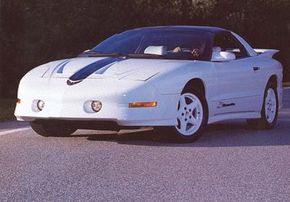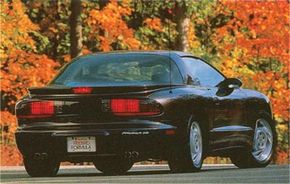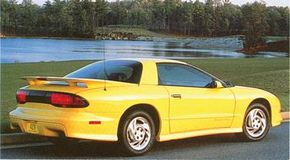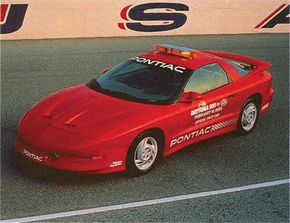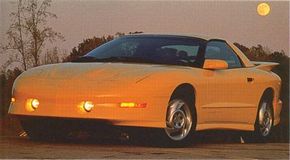After a close call with extinction, the Firebird's future now seemed assured with the 1993 Pontiac Firebird.
In attempting to recapture its flock of lost customers-and to ensnare a throng of newcomers-Firebird demanded more than a freshening. Instead of a cosmetic facelift, it required a new shape. Rather than relying on style and performance images from the past, it needed to gaze at the future.
Advertisement
Pontiac Firebird Image Gallery
Yes, it would have to build upon the ponycar tradition that had commenced way back in the muscle-car world of the Sixties. But heritage wasn't enough. This would have to be a Fire-bird aimed squarely at the Nineties, but one that didn't neglect its carefully nurtured status as an automotive legend.
Amazingly, the conspicuously restyled Firebird that appeared at Detroit's auto show in January 1993 seemed to have succeeded on all counts. As the richly rounded 2+2 coupe went on sale, Road & Track magazine declared the bold new Firebird a "reaffirmation of the ponycar concept . . . updated with Nineties technology." Motor Trend concurred, noting that while Camaro and Firebird were clearly new, they kept "one technological leg planted firmly in a fun-filled past."
That technology encompassed an updated concern for safety features. Air bags for both the driver and front passenger were standard on every Firebird. Anti-lock braking was available for the first time, and 5-mph bumpers were installed (beating the 2.5-mph federal requirement).
Just how new was this latest Firebird? Pontiac claimed that only 10 percent of its content carried over from 1992.
Performance also earned a great deal of attention. Engine choices dipped to two, but both were more powerful than their predecessors. Base Firebirds carried a V-6 again, but this one displaced 3.4 liters (enlarged from the previous 3.1-liter engine). Running with sequential fuel injection, it delivered an impressive 160 horsepower-20 more than the last 3.1 V-6.
Both the 5.0-liter V-8s and the former 5.7 were gone, but standard on Formula and Trans Am was a 275-horsepower 5.7-liter V-8. Tagged LT1 (identical to the Corvette designation), the modernized big V-8 yielded 25 fewer horsepower than a 'Vette version-but that was still 35 more than the top Firebird engine of '92. Trans Am was initially a Formula-based appearance/trim option rather than a separate model, and the GTA edition was history. Nevertheless, this was the most powerful regular-production Firebird since the Super-Duty 455 of 1973-74.
A five-speed gearbox was standard again on the base model, while V-8 Firebirds employed a new six-speed. Unlike the Corvette's six-speed, this one didn't automatically shift from first gear to fourth under light throttle (a fuel-economy measure). A four-speed automatic transmission remained optional.
Chevrolet's Camaro again shared Firebird's under-the-skin engineering and powertrains. Traditional rear-wheel drive continued, on the same basic platform with a 101-inch wheelbase. Only a three-door Firebird hatchback went on sale in the first season, but a convertible was planned-and destined to arrive during the 1994 model year.
If you want to learn more about muscle cars and Firebirds, check out these pages:
- Firebird Reviews by Consumer Guide
- Muscle Cars
Advertisement
